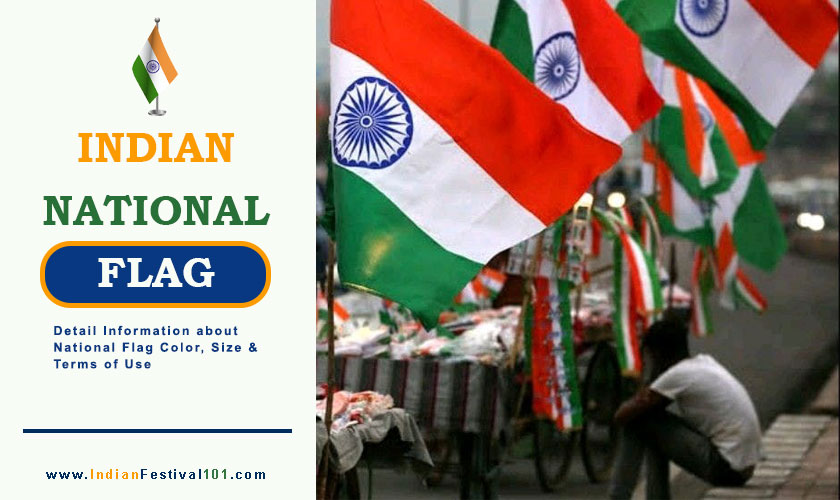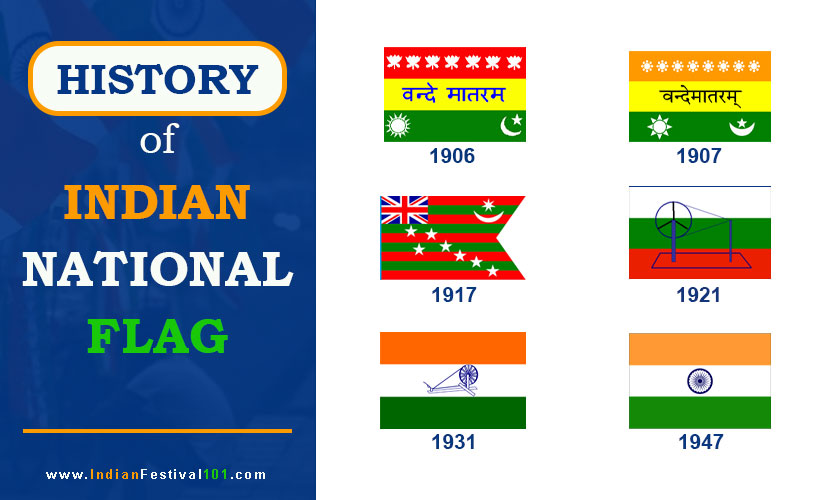During the National festival celebration, our national flag always stands in the sky. We can see the national flag in the hands of children, government offices, and in the hands of common citizens. When we think about our national flag a question comes to our mind. Here are the details of our tricolor. At the end of this blog, you will know detailed information about our Indian flag.
The term tricolor or Tiranga refers to the national flag of India. The tricolor is the pride of the nation and we feel proud being Indian. At every National Festival in India, people hold the Indian flag in the form of a badge on their chest, or host flag and salute. The Indian national flag represents the Indian struggle for freedom. Our first Prime Minister Jawaharlal Nehru called it a symbol of freedom.
The national flag of any country is an identity of that country. Whenever we talk about our country at the international desk, we represent our nation with the flag. During international games or sports meet, we recognize any team and its players by their country’s national flag. At the time of war, the national flag plays a significant role to make the people energetic and patriotic for the country.
Development of the Indian National Flag
The development journey of the Indian National flag is quite interesting and has covered a long journey. The national flag was designed by Pingali Venkayya. It has been changed 6 times and then the final is what we see today. Checkout:- History of Indian National Flag.
The present form of the national flag of India was adopted on 22 July 1947 a few days before India’s independence during a meeting of the Constituent Assembly. From 15 August 1947 to 26 January 1950 the tricolor served as the national flag of the Dominion of India and after 26 January 1950, the tricolor served as the national flag of the Republic of India.
National Flag Information
National Flag Color Name
The National Flag of India is a horizontal tricolor of deep saffron (Kesari) at the top, white at the middle, and dark green at the bottom in equal proportion.
The national flag of India shall be made of hand-spun and hand-woven wool/cotton/silk
The National Flag of India has three colors, with a deep saffron color at the top, white at the middle, and dark green at the bottom in equal proportion in the horizontal dimensions.
- Saffron: Symbol of Sacrifice and Courage
- White: Represent Peace, Honesty, and Purity
- Green: Represent faith and chivalry, and is a symbol of prosperity, vibrancy, and life.
National Flag Standard Size
The national flag should have a dimension in a 2:3 ratio, i.e. Length of the national flag should be 1.5 times its width of it.
As per the Flag code of India, the National flag shall be made hand-spun and hand-woven wool, cotton, or silk khadi bunting. The national flag shall be rectangular in shape and shall be in the ratio of 3:2 (ratio of length to height)
Ashok Chakra of Indian National Flag
Ashok chakra is taken from the “wheel of the law” which is in the Sarnath Lion Capital made by the 3rd century BC Mauryan Emperor Ashoka. Dharma Chakra is the national flag of India that shows that there is life in movement and death in stagnation.
Manufacturing of the Indian National Flag
The Bureau of Indian Standards (IS) sets standards for the manufacturing of the Indian national flag. It specifies the cloth, dye, color, and thread count and also layout rules regarding its hoisting. The Indian national flag can only be made of Khadi.
Flag Code for the Indian National Flag
The flag code of India 2002, has been divided into three parts to make it more convenient.
- Part I of the flag code contains the rules related to the general description regarding the national flag of India.
- Part II of the flag code contains the rules related to displaying the national flag by the general public, private organizations, educational institutions, etc.
- Part III of the code regulates how the national flag is to be displayed by central and state governments, their organization, and their agencies.
Does and Don’t
Indian national flag is a national symbol and is respected by every citizen. There are certain does and don’t which are laid down for common people regarding the national flag as below.
- The saffron color band should be at the top whenever the national flag is raised.
- No flag or emblem should be placed either to its right or above the national flag.
- If other flags are hung in a line with the national flag then they are to be placed to the left of the national flag.
- When the Indian national flag is carried out in a procession or in a parade, it shall be in front of the line of center, and if there is a line of other flags then it must be on the right.
- Indian National Flag or any imitation of it must not be used for any purpose of trade, business, or any profession.
- The national flag should always be taken down at the desk.
- Indian citizens are allowed to hoist the Indian flag over their homes, offices, and factories on any day after the amendment in the Indian flag code on 26th January 2002. After this amendment, Indians can proudly display the Indian national flag anywhere and anytime but the provision of the flag code is to be followed strictly to avoid any disrespect o the tricolor. Earlier Indian citizens can only host the national flags over their homes, offices, and factories on national days.
- The National flag should be generally flown on important government buildings like the Rashtrapati Bhawan, the parliament house, the supreme court of India, the high courts, the secretariats, the commissioner’s office, etc.
Some Rules Related to the Tricolor
You have read the journey till the freedom of the tricolor. Now after independence, some rules related to the tricolor know the story of the law and the changes in it.
After India’s independence, two laws related to the national flag tricolor were made in the country –
- The Emblem and Name (Prevention of Improper Use) Act, 1950
- The Prevention of Insult or Disrespect to National Honor Act, 1971
Indian Flag Code Changed After 55 Years
The Indian Flag Code was changed on 25 January 2002, 55 years after the country’s independence. Through this 2 important changes were made.
- First: Now on any normal day, the Indian National Flag has been allowed to be put on our homes, offices, and factories. Earlier, flag hoisting was not allowed in homes or private institutions.
- Second: In the Flag Code, any kind of disrespect done with the tricolor flag has been said to be considered a crime.




